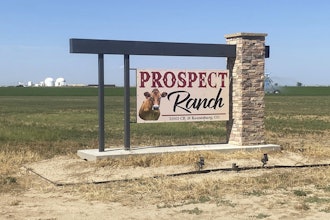BOISE, Idaho (AP) — A $1.65 billion facility will be built at a nuclear site in eastern Idaho to handle fuel waste from the nation's fleet of nuclear-powered warships, the Navy and U.S. Department of Energy announced Tuesday.
Officials said the new facility is needed to keep nuclear-powered aircraft carriers and submarines deployed.
The new construction will be at the Naval Reactors facility on the Energy Department's southeastern Idaho site that covers about 890-square-miles of high-desert sagebrush steppe. The area also includes the Idaho National Laboratory, considered the nation's primary lab for nuclear research.
"This action will provide the infrastructure necessary to support the naval nuclear reactor defueling and refueling schedules to meet the operational needs of the U.S. Navy," the Department of Energy said in a statement.
Officials said site preparation is expected to begin in 2017 with construction of the facility likely to start in 2019, creating 360 on-site jobs. The facility is expected to start operating in late 2024.
The Department of Energy formally announced the plan with publication of what's called a record of decision in the Federal Register. The record of decision made public Tuesday was signed last month by Admiral James F. Caldwell Jr., director of the U.S. Naval Nuclear Propulsion Program.
The record of decision concludes a lengthy and public environmental process that also looked at continuing using outdated facilities at the eastern Idaho site or overhauling them.
Officials say the new facility will operate through at least 2060 and can handle a new type of spent-fuel shipping container, which is not possible at the current facility. The Gerald R. Ford aircraft carrier will use the new container when the carrier becomes operational. So will nuclear-powered submarines under construction, officials said.
The facility will have storage spaces to submerge the fuel waste in water so it cools before being transferred into dry storage areas, said Don Dahl, a spokesman for the Naval Reactors facility.
The places where the waste will be submerged will meet seismic standards aimed at preventing them from being affected by earthquakes, unlike existing storage spaces at the site that don't meet those standards.
The Naval Nuclear Propulsion Program, a joint Navy and Energy Department organization, has been sending spent Navy fuel to the Idaho site since 1957. It's transported by rail from shipyards. Dahl declined to describe security at Navy site.
"Appropriate security will be provided for the new facility," he said.
Officials also declined on Tuesday to describe security measures at the rest of site, but access roads have armed checkpoints and visitors must leave passenger vehicles far from facilities and ride buses into secured areas.
Nuclear waste coming into Idaho prompted lawsuits when state leaders in the late 1980s and early 1990s thought the site was becoming a permanent nuclear waste repository. The lawsuits culminated in a 1995 agreement, then a 2008 addendum, limiting such shipments and requiring most nuclear waste to be removed from the federal site by 2035. The deal applies to the Navy's spent nuclear fuel.
Under the agreement, fuel waste coming to the new facility after 2035 will only remain for the six years it takes to cool in pools. After that, it's required to be put in dry storage and taken out of Idaho. However, the nation has no repository for spent nuclear fuel at this time, so where it will go is not clear.
Susan Burke, Idaho National Laboratory oversight coordinator for the state Department of Environmental Quality, in an email to The Associated Press on Tuesday said she had no comment on the release of the record of decision that follows the final environmental impact statement released in October and officially approves the project.
She's previously said the state supported building a state-of-the-art facility.






















